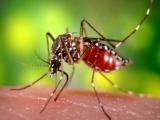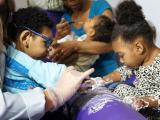Ahead of an increase in mosquito activity, Texas health officials today announced they were expanding Zika testing for all pregnant women plus people with symptoms in six counties on the southern tip of the state at the Mexico border.
The announcement comes amid other activities to prepare for more Zika cases, including an upcoming telephone town hall meeting from the US Centers for Disease Control and Prevention (CDC) to better prepare clinicians for treating pregnant women and babies affected by the virus.
Texas casts wider net
Last October, even before it confirmed any local Zika cases, Texas issued testing guidance for pregnant women in six counties, but only in those who had two of the four most common symptoms. The counties were Cameron, Hildago, Starr, Webb, Willacy, and Zapata.
Cases of dengue, a disease that is likewise spread by Aedes aegypti mosquitoes, had been reported from the area before, and officials feared Zika would follow in its footsteps.
After Texas confirmed its first local Zika cases in the Rio Grande valley at the end of 2016, officials issued additional guidance, urging clinicians to test all pregnant women in Brownsville for Zika virus.
In its update today, the Texas Department of State Health Services (TDSHS) said in a health alert to clinicians that all pregnant residents of the six counties should be tested in both the first and second trimesters, regardless of symptoms.
John Hellerstedt, MD, TDSHS commissioner, said in the statement that it's only a matter of time until local transmission resumes in Texas. "We want to cast as wide a net as possible with testing to increase our ability to find and respond to cases, and the Lower Rio Grande Valley remains the part of the state most at risk for Zika transmission."
Also, Texas health officials recommend that health providers test anyone who has three of the four most common Zika symptoms: rash, fever, joint pain, or eye redness.
For the rest of the state, the TDSHS recommends testing for anyone with three of the four symptoms and for pregnant women who have traveled to local transmission areas, including any part of Mexico.
The TDSHS said that as temperatures climb, mosquito activity will increase. Zika could reappear in the same region as last year because of Ae aegypti activity and the proximity to Mexico, where ongoing Zika transmission continues, including in communities just across the border.
Officials urged the public to take precautions, such as protecting themselves from mosquitoes at home and while traveling to areas where Zika is spreading.
Upcoming CDC town hall
As federal officials brace for more Zika activity, the CDC announced an Apr 11 town hall teleconference for clinicians on protecting pregnant women and babies from the virus.
The session, scheduled for 2:00 pm EST, will be led by three experts, including the CDC's Denise Jamieson, MD, MPH, chief of its Women's Health and Fertility branch.
Earlier this week, CDC officials said the threat from Zika virus is far from over, adding that it is still getting about 30 to 40 reports each week of pregnant women infected with Zika virus.
In a new analysis this week of data from the US Zika pregnancy registry, CDC researchers said 1 in 10 pregnant women with confirmed infections are likely to deliver babies with Zika-related birth defects. They also said only one in four Zika-affected babies had received the recommended brain imaging needed to identify problems and get patients the needed medical care and support.
Possible $15 billion burden
In other developments, the United Nations Development Program and the International Federation of Red Cross and Red Crescent Societies (IFRC) this week released an assessment of the socioeconomic burden of Zika on the Americas, which found that losses in gross domestic product could range from $7 billion to $15 billion from 2015 through 2017.
The report put an extra emphasis on Brazil, Colombia, and Suriname. Researchers did macroeconomic modeling exercises, and desk reviews and interviews with affected people and representatives from public-sector institutions.
The largest costs were direct and indirect costs associated with microcephaly and Guillain-Barre syndrome (GBS). The region's estimated lifetime costs could be $8 billion for microcephaly and $3 billion for GBS.
The losses place immediate burdens on healthcare and social welfare systems and could undermine long-term progress in those two areas, the organizations said. They added that larger investments in prevention, preparedness, and response at all governmental levels would be cost-effective and help countries in the region meet sustainable development goals for 2030.
See also:
Apr 7 TDSHS news release
Apr 11 CDC Zika town hall teleconference information
Apr 4 CIDRAP News story "Zika birth defects noted in 1 in 10 infected US pregnant women"
Apr 3 UN/IFRC Zika cost estimates for the Americas region






















